Conveners:
Johan De Grave, UGent (johan.degrave@ugent.be)
Stijn Dewaele, UGent (stijndg.dewaele@ugent.be)
Philippe Muchez, KU Leuven (philippe.muchez@kuleuven.be)
Johan Yans, UNamur (johan.yans@unamur.be)
Anouk Borst, RMCA & KU Leuven (anouk.borst@africamuseum.be)
Thierry De Putter, RMCA (thierry.de.putter@africamuseum.be)
Max Fernandez-Alonso, RMCA (max.fernandez@africamuseum.be)
Invited speaker:
Antonio Carlos Pedrosa Soares, Geotectonics Research Group at the CPMTC Research Centre, Federal University of Minas Gerais, Belo Horizonte, Brazil
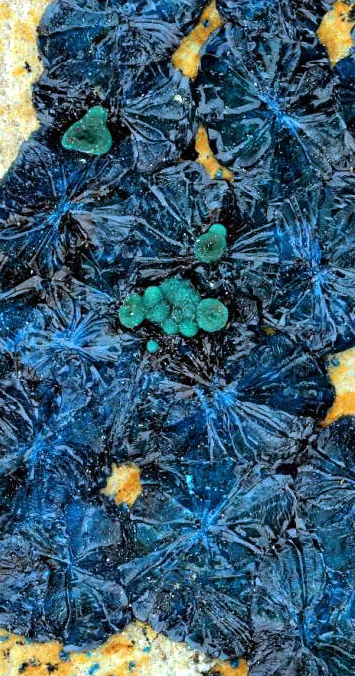 Mineral resources are at the heart of our modern societies, with high-tech technologies fuelling a fast-growing demand for commodities and rare elements or metals. The formation of ore deposits is intimately linked to major geodynamic events – magmatic activity, hydrothermal fluids circulation, vertical movements, weathering, etc. The objective of this session is to explore the various geological contexts in which ore deposits can form. Several conveners have an acknowledged expertise in Africa, and hence welcome contributions on African research topics. However, case studies from other regions are most welcome as geodynamic processes are never restricted to one specific area in the world. Contributions on the link between mineral resources exploitation and green techs or development goals are also most welcome.
Mineral resources are at the heart of our modern societies, with high-tech technologies fuelling a fast-growing demand for commodities and rare elements or metals. The formation of ore deposits is intimately linked to major geodynamic events – magmatic activity, hydrothermal fluids circulation, vertical movements, weathering, etc. The objective of this session is to explore the various geological contexts in which ore deposits can form. Several conveners have an acknowledged expertise in Africa, and hence welcome contributions on African research topics. However, case studies from other regions are most welcome as geodynamic processes are never restricted to one specific area in the world. Contributions on the link between mineral resources exploitation and green techs or development goals are also most welcome.
Specific topics include (not exclusive): the geodynamics and mineralization of Mesoproterozoic belts in Central Africa; ore-forming process in the Neoproterozoic of Central Africa; West Congo Belt in Africa and its counterpart in SE Brazil; supergene ores; metals for a green future; secondary metal resources.
| Session 1: Geodynamics and Mineral Resources | ||||
| Thursday 16th, Auditorium | ||||
| 1rst author Name | Surname | Time | Abstract | Abstract title |
| De Grave | Johan | 10h00 | O1-1 | Exhumation of the South Atlantic passive margin of the Democratic Republic of Congo |
| Akame | Joseph | 10h20 | O1-2 | A long-lasting Archean deformation history in the Sangmelima terrane, NW Congo Craton, Southern Cameroon |
| Borst | Anouk | 10h40 | O1-3 | Alkaline magmatism and critical metals in Angola: Field observations and petrography of the Nejoio nepheline syenite complex |
| Coffee break | ||||
| Buyse | Florian | 11h30 | O1-4 | Carbonatitic affinity of the rare earth element (REE) mineralization at Gakara (Burundi). |
| Demaude | Merry | 11h50 | O1-5 | Experiments on silicate-carbonate liquid immiscibility in a Fe-P rich system, a premise for phoscorites formation in carbonatite complexes |
| Acke | Jolan | 12h12 | O1-6 | Au Vein-Type Mineralisation at Escádia Grande (Portugal): A Microstructural and Geochemical Analysis |
| Lunch break | ||||
| Wouters | Sander | 14h00 | O1-7 | Characterization of auriferous quartz vein mineralizing fluids in the Mesoproterozoic Karagwe-Ankole belt (Byumba, Rwanda): Petrography, microthermometry and Raman spectroscopy |
| De Putter | Thierry | 14h20 | O1-8 | Western climate-oriented ethics and artisanal mining of cobalt in DRC |
| Abera | Kaleab | 14h40 | O1-9 | Influence of geological structures on failure possibility around Meli area gold mine site, north western Tigray region, north Ethiopia |
| Coffee break | ||||
| Choulet | Flavien | 15h30 | O1-10 | Distribution of trace elements in the secondary minerals of Zn-Pb deposits: new results from Belgium and Moroccan willemite deposits. |
| Verhaert | Michele | 15h50 | O1-11 | Controls of host rocks on weathering processes and dating of Cu-As-Pb-rich supergene deposits (Moroccan Anti-Atlas Copperbelt, Morocco) |
| Dekoninck | Augustin | 16h10 | O1-12 | From Precambrian to Cenozoic the manganese odyssey of Morocco |
| Poster presentations, Foyer | ||||
| Cibambula | Emmanuel | 13h00 | P1-1 | Le Sous-groupe de la Mpioka, témoins de la réactivation des failles post-Schisto-calcaire dans le fossé de la Basse-Sangha |
| De Clercq | Shana | 13h00 | P1-2 | Characterisation and Proterozoic evolution of the granitoids of the Karagwe-Ankole belt (KAB) in Rwanda |
| De Groote | Julie | 13h00 | P1-3 | Petrographical, mineralogical and geochemical study of the gold mineralization at Imonga-Saramabila, Maniema, DRCongo |
| Grine | Oumaima | 13h00 | P1-4 | Properties of refractory materials from low-cost Northern Tunisian kaolinitic clays |
| Moussi | Béchir | 13h00 | P1-5 | Valorization of Tunisian Numidian clays (Upper Oligocene) in the manufacture of ceramic tiles |
| Poot | Julin | 13h00 | P1-6 | Unravel the rate of pyrite oxidation under weathering conditions: an experimental approach |
| Nkodia | Hardy | 13h00 | P1-7 | Paleostress reconstruction and tectono-structural evolution of the West-Congo Orogen, in Republic Democratic of Congo and Republic of Congo |
| Furaha | Ghislain | 13h00 | P1-8 | Remapping of the Cohoha complex… |
| Kalikone Buzera | Christian | 13h00 | P1-9 | Tentative de décomplexification du complexe d’Uvira : Cas des secteurs d’Idjwi et Kalehe, Sud-Kivu/ RDC. Cartographie, pétrographie et minéralisation |
| Kalikone Buzera | Christian | 13h00 | P1-10 | Tentative de décomplexification du complexe de Butare: ses extrémités NW et SE respectivement à Kalehe et Idjwi à l'Est de la RDC et à Zina-Randa et Cohoha au Nord du Burundi |
| Kezimana | Lee-Fred | 13h00 | P1-11 | Tentative de décomplexification du complexe de Zina-Randa (Nord-Ouest du Burundi) |
| Ntenge | Alain | 13h00 | P1-12 | New insights from the revised geological map of the West Rwanda (Karongi-Nyamagabe-Rusizi districts) |
Conveners:
François Fripiat, ULB (francois.fripiat@ulb.be)
Xavier Devleeschouwer, RBINS-GSB (xavier.devleeschouwer@naturalsciences.be)
Steven Goderis, VUB (steven.goderis@vub.be)
Matthieu Kervyn, VUB (matthieu.kervyn.de.meerandre@vub.be)
Matthias Vanmaercke, ULiège (matthias.vanmaercke@uliege.be)
Olivier Dewitte, RMCA (olivier.dewitte@africamuseum.be)
François Kervyn, RMCA (francois.kervyn@africamuseum.be)
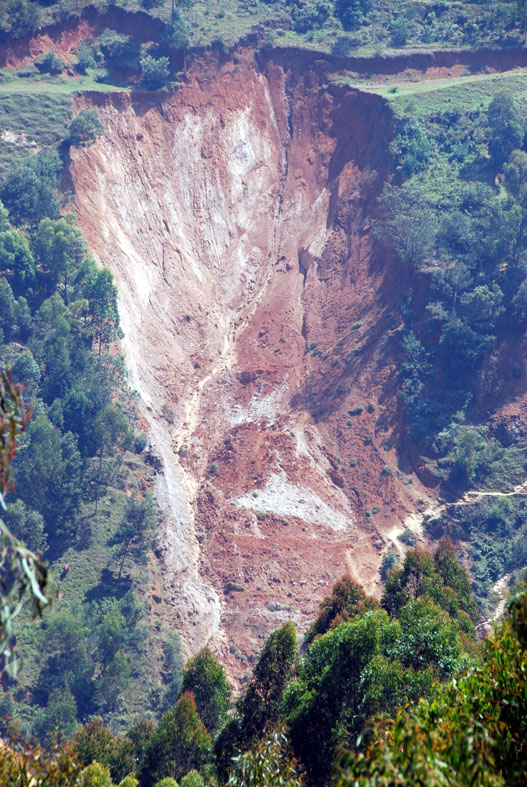
Invited speaker:
Tomáš Pánek, Dept. of Physical Geography and Geoecology, University of Ostrava, Czech Republic
The Earth's ever-changing surface is shaped by processes that govern its evolution over all temporal and spatial scales. These processes frequently act in interactions, leading to physical, chemical and biological changes. Geohazards are processes associated with sudden environmental changes. They often result in loss of life and socio-economic impacts. This session welcomes contribution in the broad fields of geomorphology and geohazards.
Specific topics include (not exclusive): fluvial, aeolian and coastal sediment transport; hillslope mass movements and soil erosion; surface manifestation of volcanisms and tectonism; weathering and pedogenesis, modelling and theoretical and quantitative geomorphology; geological records of Earth surface processes in relation to environmental change; impacts of past, current and future environmental change upon Earth surface processes; relationship between Earth surface processes, hazard, risk, and management.
| Session 2: Earth Surface Processes and Geohazards | ||||
| Thursday 16th, Room 2 | ||||
| 1rst author Name | Surname | Time | Abstract | Abstract title |
| Sekajugo | John | 10h00 | O2-1 | Reliability of citizen scientists for near-real time reporting of geohazards. An analysis of biases and accuracy for the Rwenzori Mountains, Uganda |
| Ronchi | Bénédicte | 10h20 | O2-2 | How to integrate outbreak risk issues from drainage adits from abandoned mines in land use planning: a tool for decision-makers. |
| De Geeter | Sofie | 10h40 | O2-3 | Exploring the Curve Number method to predict gully head occurrence on the continental scale of Africa |
| Coffee break | ||||
| Brosens | Lisa | 11h30 | O2-4 | Is there an environmental crisis in the Lake Alaotra region (Madagascar)? Insights from lavaka (gully) dynamics and floodplain sedimentation |
| Smets | Benoît | 11h50 | O2-5 | The May 2021 Flank Eruption of Nyiragongo Volcano, Democratic Republic of Congo |
| Hendrickx | Hanne | 12h12 | O2-6 | Close-range remote sensing of large consecutive rockfall events from a permafrost rock face, Mattertal, Switzerland |
| Poster presentations, Foyer | ||||
| Devleeschouwer | Xavier | 13h00 | P2-1 | The LASUGEO project: monitoring LAnd SUbsidence caused by Groundwater exploitation through gEOdetic measurements |
| Deijns | Axel | 13h00 | P2-2 | Landslide and flash flood timing from satellite radar imagery in the western branch of the East African Rift |
| Dewitte | Olivier | 13h00 | P2-3 | Landslide Timing in a Changing Tropical Environment: the North Tanganyika-Kivu Rift region, Africa |
| O'hara | Daniel | 13h00 | P2-4 | Numerical Modeling of Volcanic Edifice Degradation: Towards an Integrated Understanding of Edifice Morphologic Evolution. |
| Sekeraviti | K.A. | 13h00 | P2-5 | Analyse morpho-tectonique sur la ville de Matadi dans la province du Kongo Central (R.D.C) |
| Smets | Benoît | 13h00 | P2-6 | Remote Sensing of Geo-Hydrological Hazards in Central Africa |
| Delhaye | Louise | 13h00 | P2-7 | Application of Photogrammetry in Earth Sciences: Case Study of Lava Accumulation and Ground Deformation in an Active Volcanic Crater |
| Brosens | Lisa | 13h00 | P2-8 | Can the 12-m TanDEM-X DEM be used to accurately estimate lavaka (gully) volumes and mobilization rates? Insights from a comparative analysis with SRTM and a high resolution UAV-SfM DEM |
| Dewaide | Lorraine | 13h00 | P2-9 | RISSC: Towards a better management of cavity-related ground movements in Wallonia and Hauts-de-France Regions |
Conveners:
Olivier Namur, KU Leuven (olivier.namur@kuleuven.be)
Jacqueline Vander Auwera, ULiège (jvdauwera@ulg.ac.be)
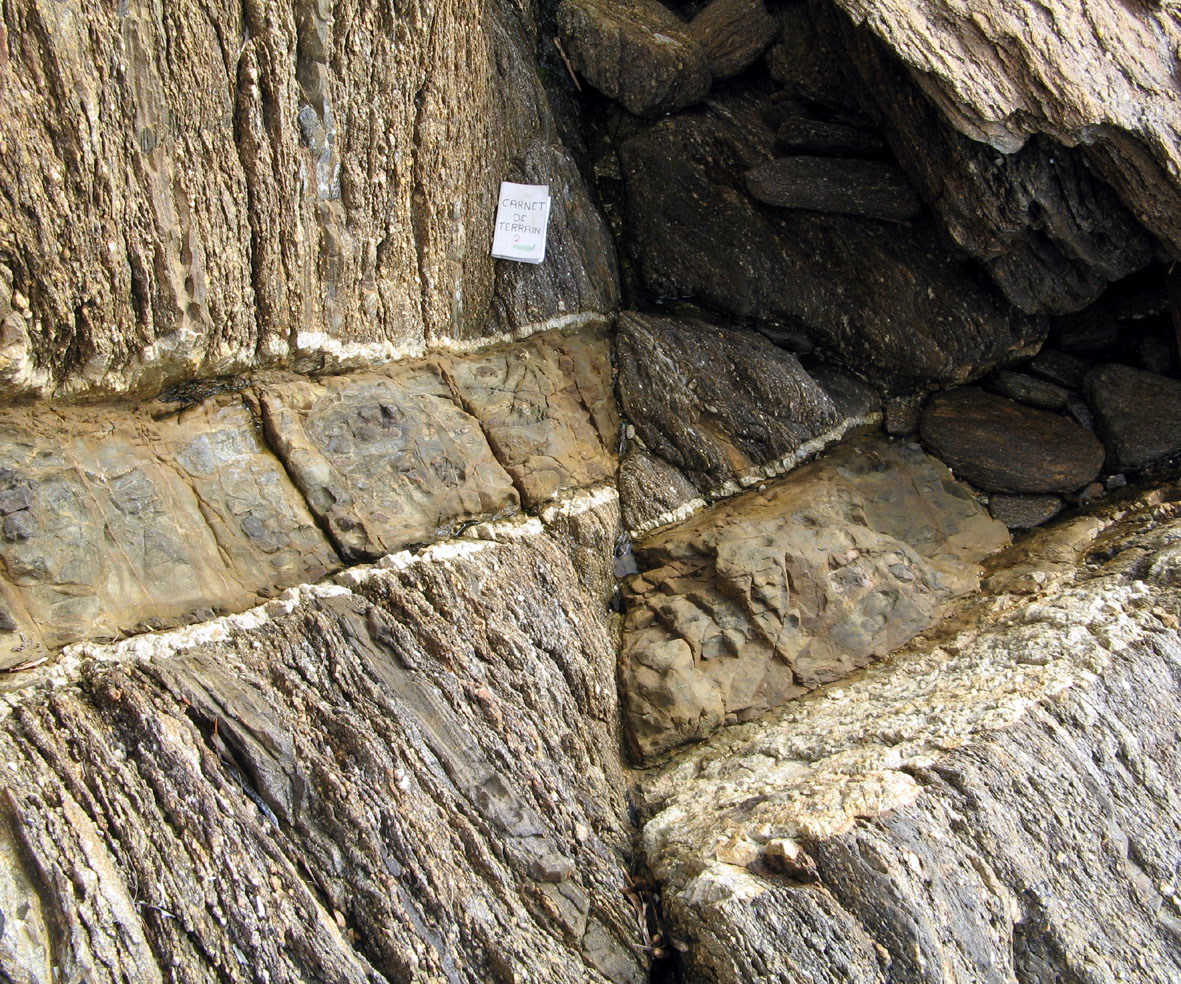 Igneous activity has affected all planets. On Earth, the compositional variability of magmas is large and depends on the nature of the source, the conditions of partial melting as well as the on the effects of magmatic differentiation processes, such as crystal fractionation, mixing, assimilation or immiscibility. Basalts appear to be common to all rocky bodies but the abundance of highly evolved felsic magmas seems to be a characteristic of our planet. Metamorphism will modify the rocks from their original igneous state. In most extraterrestrial bodies, fragmentation due to impacts is the main form of metamorphism but thermal and hydrothermal metamorphism has also been recognized in meteorites. On Earth, the dynamic evolution of the lithosphere is preserved in the metamorphic rock record that encompass a large variety of processes ranging from thermal to regional scale metamorphism.
Igneous activity has affected all planets. On Earth, the compositional variability of magmas is large and depends on the nature of the source, the conditions of partial melting as well as the on the effects of magmatic differentiation processes, such as crystal fractionation, mixing, assimilation or immiscibility. Basalts appear to be common to all rocky bodies but the abundance of highly evolved felsic magmas seems to be a characteristic of our planet. Metamorphism will modify the rocks from their original igneous state. In most extraterrestrial bodies, fragmentation due to impacts is the main form of metamorphism but thermal and hydrothermal metamorphism has also been recognized in meteorites. On Earth, the dynamic evolution of the lithosphere is preserved in the metamorphic rock record that encompass a large variety of processes ranging from thermal to regional scale metamorphism.
This session will highlight research on case studies of magmatic differentiation starting from the formation of the solar system and meteorites, the partial melting of the upper mantle and lower crust, up to the formation of upper crustal melts. We welcome contributions in integrated metamorphic petrology and its application to the Earth lithosphere and rocky bodies.
| Session 3: Planetary Magmatic and Metamorphic Systems | ||||
| Thursday 16th, Room 1 | ||||
| 1rst author Name | Surname | Time | Abstract | Abstract title |
| André | Luc | 10h00 | O3-1 | The early growth of felsic continental crust revisited from Germanium/silicon versus silicon isotopic evidences |
| Shepherd | Kathleen | 10h20 | O3-2 | Trace element partitioning between clinopyroxene, magnetite, ilmenite, and ferrobasaltic magmas: an experimental study |
| Van Gerve | Tomas | 10h40 | O3-3 | Constraints on deep magmatic volatile budgets from olivine hosted melt inclusions. |
| Coffee break | ||||
| Molendijk | Sander Martijn | 11h30 | O3-4 | Petrology of the Nyiragongo Volcano, DR Congo |
| Zaronikola | Nina | 11h50 | O3-5 | Petrogenesis and isotopic investigation of Pillow Lavas from the Troodos ophiolite, Cyprus: Cu and Zn isotopes |
| Vander Auwera | Jacqueline | 12h12 | O3-6 | Calbuco (Central Southern Volcanic Zone, Chile): petrology of a hazardous volcano |
| Lunch break | ||||
| Bechon | Tonin | 14h00 | O3-7 | Insights on mantle melting below Osorno Volcano (Southern Volcanic Zone, Chile) |
| Fugmann | Paul | 14h20 | O3-8 | Constraining the conditions of magmatic differentiation under Villarrica stratovolcano (Central Southern Volcanic Zone, Chile) |
| van der Does | Laura | 14h40 | O3-9 | Combining tourmaline crystal morphology and geochemistry to investigate disequilibrium crystallization in pegmatitic melts |
| Coffee break | ||||
| Radelet | Sasha | 15h30 | O3-10 | The response of a magmatic plumbing system to sector collapse: constraints from petrology and geochemistry at Mt. Meru, Tanzania |
| Charlier | Bernard | 15h50 | O3-11 | Mercury and its exploration by the BepiColombo mission |
| Pirotte | Hadrien | 16h10 | O3-12 | Equilibria and trace element partitioning in silicate-metal-sulfide melts under highly reducing conditions: a key to understand the evolution of Mercury |
| Poster presentations, Foyer | ||||
| Billon | Melvyn | 13h00 | P3-1 | Timescales of crystal mush storage in the Central Southern Volcanic Zone of Chile |
| Celis | Joren | 13h00 | P3-2 | Experimental constraints on the internal structure of Mercury |
| Kamate | Ephrem | 13h00 | P3-3 | Petrology of Nyamulagira volcano, Virunga Province, DR Congo |
| Zhang | Yi-shen | 13h00 | P3-4 | Silicate liquid immiscibility of low-Ti and high-Ti basalts in the Emeishan Large Igneous Province, SW China |
Conveners:
Jan Elsen, KU Leuven (jan.elsen@kuleuven.be)
Nuno Da Silva, President of UBLG (nunodelaforet@gmail.com)
Michiel Dusar, RBINS-GSB (mdusar@naturalsciences.be)
Eric Goemaere, RBINS-GSB (eric.goemaere@naturalsciences.be)
Invited speaker:
Gilles Rixhon, Faculté de géographie et d'aménagement and Ecole Nationale du Génie de l'Eau et de l'Environnement, University of Strasbourg, France
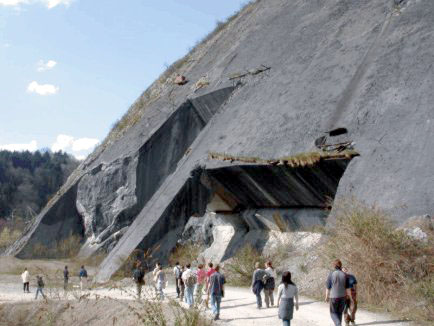 In this section Belgium’s rich geological heritage is depicted in its impact on landscapes and its provision of the mineral base of the built environment, past and present. The link between the geological substrate and cultural heritage were created and maintained by many generations of inhabitants with profound knowledge of their environment, but this link seems to be broken today. Much of the traditional knowledge has been lost on where to find and how to use local mineral resources or on the hazards related to former exploitations or land use. Geoscientists have become essential partners to archeologists, historians, architects, city planners, tourist agencies … in reconstructing these links, but also to quarry operators, construction companies for providing sound bases for efficient and ecological extraction and use of the subsurface materials. The geological diversity of Belgium’s landscapes is gradually becoming acknowledged as a valuable resource for education and tourism and integrated into global protection and management schemes.
In this section Belgium’s rich geological heritage is depicted in its impact on landscapes and its provision of the mineral base of the built environment, past and present. The link between the geological substrate and cultural heritage were created and maintained by many generations of inhabitants with profound knowledge of their environment, but this link seems to be broken today. Much of the traditional knowledge has been lost on where to find and how to use local mineral resources or on the hazards related to former exploitations or land use. Geoscientists have become essential partners to archeologists, historians, architects, city planners, tourist agencies … in reconstructing these links, but also to quarry operators, construction companies for providing sound bases for efficient and ecological extraction and use of the subsurface materials. The geological diversity of Belgium’s landscapes is gradually becoming acknowledged as a valuable resource for education and tourism and integrated into global protection and management schemes.
| Session 4: Geology, Man and Society | ||||
| Wednesday 15th, Room 2 | ||||
| 1rst author Name | Surname | Time | Abstract | Abstract title |
| Teck | Priscilla | 10h00 | O4-1 | Characterization of metal particles in municipal solid waste incineration ashes using neural network based image analysis |
| Dreezen | Roland | 10h20 | O4-2 | Pierre de Meuse, an exceptional Belgian historical heritage stone from the Meuse valley |
| Dusar | Michiel | 10h40 | O4-3 | Sourcing natural stone used in the architecture of stone-poor landscapes, demonstrated for northern Belgium |
| Coffee break | ||||
| Lahaye | Mike | 11h30 | O4-4 | 3D mapping of underground galleries from Maastricht limestone extraction in Riemst |
| Compernolle | Tine | 11h50 | O4-5 | Towards a dynamic and interdisciplinary assessment for the sustainable management of geological resources |
| Barros | Renata | 12h10 | O4-6 | Structural framework as the new fundament for international geoscientific cooperation and policy support |
| Lunch break | ||||
| Van Haren | Tom | 14h00 | O4-7 | Getting the picture of the shallow urban subsurface: a shallow subsurface model of the city of Antwerp as test case |
| Piessens | Kris | 14h20 | O4-8 | Enhanced rock weathering: the overlooked hydrodynamic trap |
| Poster presentations, Foyer | ||||
| Denayer | Julien | 13h00 | P4-1 | ‘Fossiles en Ville’: popularizing the History of Life and Earth through urban palaeontology and geology |
| Pan | Chen-guang | 13h00 | P4-2 | Seasonal variations of water-soluble heavy metals in atmospheric deposition at NE Sichuan, Central China: Natural and anthropogenic effects |
| Pas | Damien | 13h00 | P4-3 | Service Géologique de Wallonie : a new chapter |
| Van der Geest | Hannah | 13h00 | P4-4 | Geochemistry and petrography of in-situ flints from the type-Maastrichtian (NE Belgium and SE Netherlands): implications for flint formation processes and flint provenancing |
| Verheyden | Sophie | 13h00 | P4-5 | UNESCO Global Geopark Famenne-Ardenne, Belgium – opportunities and role for geoscientists |
| Mambwe | Pascal | 13h00 | P4-6 | Tectonostratigraphic evolution coupled with climate changes of the pre-Sturtian Fungurume-Mwashya platform in the Tenke-Fungurume Mining District, Democratic Republic of the Congo |
| Bevandic | Srecko | 13h00 | P4-7 | Pb and Zn deportment estimation of historic mine waste by using an integrated mineralogical and geochemical approach: a case study from the Plombières mine waste (eastern Belgium) |
| Wong Hearing | Thomas | 13h00 | P4-8 | The Rock Garden: increasing the accessibility of geoscience skills training with a field course on campus |
| Welkenhuysen | Kris | 13h00 | P4-9 | Naturally CO2-rich water springs in Belgium evidencing complex subsurface interactions |
 Conveners:
Conveners:
Vanessa Heyvaert, RBINS-GSB (vanessa.heyvaert@naturalsciences.be)
Noel Vandenberghe, KU Leuven (noel.vandenberghe@kuleuven.be)
Anne Christine da Silva, ULiège (ac.dasilva@uliege.be)
Marc De Batist, UGent (marc.debatist@ugent.be)
Gert Jan Weltje, KU Leuven (gertjan.weltje@kuleuven.be)
Damien Delvaux, RMCA (damien.delvaux@africamuseum.be)
This session supports any submission related to basin research and sedimentology and stratigraphy. This includes all types of sedimentary settings (marine, continental, deep, shallow, clastics, carbonate), oriented towards basin scale or more local studies. We also welcome research associated with techniques and technologies in sedimentary and stratigraphy research.
Specific themes include (not exclusive): the East African Rift; the Congo Basin; the sedimentological imprint of natural hazards.
| Session 5: Basin Research and Sedimentology - Stratigraphy | ||||
| Fiday 17th, Auditoruim | ||||
| Name | Surname | Time | Abstract | Abstract title |
| Poty | Edouard | 10h00 | O5-1 | Frasnian–Famennian deposits of Southern Belgium: thick and complex key sections to understand the Late Frasnian extinctions and the role played by tsunamis |
| Arts | Michiel | 10h20 | O5-2 | Silurian solid bitumen from Huy: evidences for a petroleum system in Belgium |
| Wei | Wei | 10h40 | O5-3 | Depositional environment and characteristics of organic matter of Namurian Shale, Namur Synclinorium and Campine Basin (Belgium and the S-Netherlands) |
| Coffee break | ||||
| Engel | Max | 11h30 | O5-4 | A 1500 years-record of North Atlantic storminess from the Shetland Islands (UK) – preliminary insights |
| Meyer | Inka | 11h50 | O5-5 | Lake Chala 2k: the last two millennia of environmental change in equatorial East Africa |
| Clark | Alexander | 12h10 | O5-6 | A model – proxy data comparison of mid to late Miocene paleotemperatures in western and central Europe |
| Dekoninck | Augustin | 12h30 | O5-7 | The French Massif Central: a witness of successive weathering periods since the Early Cretaceous in the Alpine foreland |
| Arfaoui | Imen | 15h30 | O5-8 | Sedimentology and Microfacies assessment of Ypresian carbonate formations in the Tellian zone (NW of Tunisia) |
| Tuema | L.O. | 15h50 | O5-9 | Etude paléoenvironnementale des roches carbonatées de la région Lufu-Toto située dans le degré carré de Mbanza Ngungu (Province du Kongo Central, R.D. Congo) |
| Delvaux | Damien | 16h10 | O5-10 | Structure and evolution of the Congo Basin: long-lived record of tectonic and climatic events during the last Billion years |
| Coffee break | ||||
| Poster presentations, Foyer | ||||
| Wils | Kathleen | 13h00 | P5-1 | Uncovering earthquake doublets in a lacustrine sedimentary record |
| Catherina | Basile | 13h00 | P5-2 | Stratigraphic architecture, sedimentology and structure of the Corinth Canal (Greece) |
| Walstra | Jan | 13h00 | P5-3 | Correlating cross-border Cenozoic stratigraphy in the Belgian-Dutch border region: results from H3O – De Voorkempen |
| Cibambula | Emmanuel | 13h00 | P5-4 | Les sous-groupes Schisto-calcaire et de la Mpioka dans la chaine panafricaine West-Congo, témoins de l’évolution paléoclimatique post-Cryogénien, Province du Kongo Central, R.D. Congo |
| Van der Meeren | Thijs | 13h00 | P5-5 | Lake Naivasha’s response to the end of the African Humid Period |
| Herbosch | Alain | 13h00 | P5-6 | Stratigraphic correlations between the Brabant Massif and the Stavelot, Rocroi and Givonne inliers (Belgium), geological implications |
| Kadima | Etienne | 13h00 | P5-7 | Crustal and sedimentary structures of the Congo basin constrained by geophysical signatures |
Conveners:
Julien Denayer, ULiège (julien.denayer@uliege.be)
Valentin Fisher, ULiège (v.fischer@uliege.be)
Stephen Louwye, UGent (stephen.louwye@ugent.be)
Cyrille Prestianni, ULiège & RBINS (cyrille.prestianni@uliege.be)
Thierry Smith, RBINS (thierry.smith@naturalsciences.be)
Robert Speijer, KU Leuven (robert.speijer@kuleuven.be)
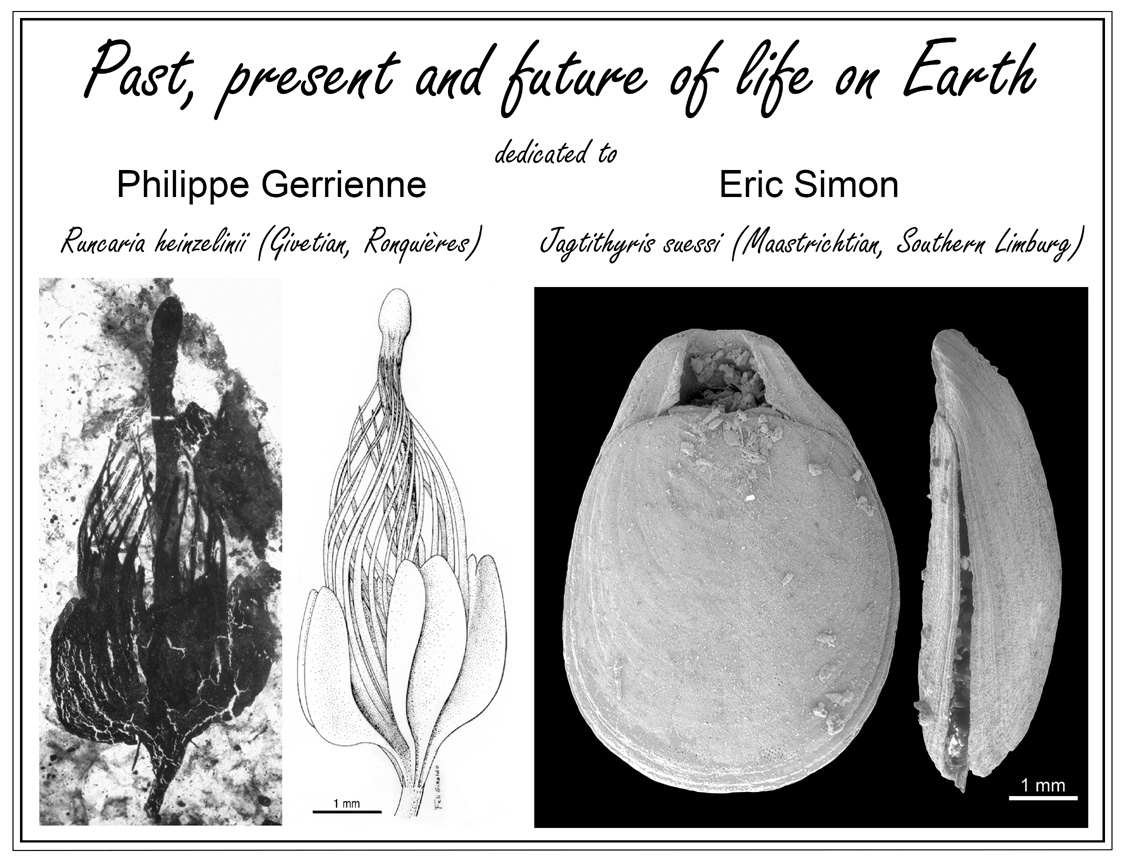 For this session we invite contributions from the entire spectrum of palaeontology. We aim at establishing an interesting mix of new developments in palaeontology, representative of the various research groups and lines of research “made in Belgium”. Accordingly, the scope will range from micropalaeontology to macropalaeontology, from systematics to stratigraphy, from ecology to evolution, from climate to CT-scanning, and from dinosaur digs to nannofossil oozes.
For this session we invite contributions from the entire spectrum of palaeontology. We aim at establishing an interesting mix of new developments in palaeontology, representative of the various research groups and lines of research “made in Belgium”. Accordingly, the scope will range from micropalaeontology to macropalaeontology, from systematics to stratigraphy, from ecology to evolution, from climate to CT-scanning, and from dinosaur digs to nannofossil oozes.
This session will be dedicated to Philippe Gerrienne and Eric Simon, two good colleagues that left us in recent years.
| Session 6: Past, Present and Future of Life on Earth | ||||
| Wednesday 15th, Auditoruim | ||||
| 1rst author Name | Surname | Time | Abstract | Abstract title |
| Zambon | Raphaël | 10h00 | O6-1 | Assessing the diversity of insects damage traces in the fossil flora of Gelinden (Limburg, Belgium) |
| Vellekoop | Johan | 10h20 | O6-2 | Rapid biological recovery following the Cretaceous-Paleogene boundary catastrophe in the Maastrichtian type area |
| Olive | Sebastien | 10h40 | O6-3 | Deciphering early stages of vertebrate evolution thanks to long ignored soft-bodied fossils from the Early Devonian of Belgium |
| Coffee break | ||||
| Goolaerts | Stijn | 11h30 | O6-4 | X-ploring new tools for paleontologists: the RBINS-RMCA micro-CT lab at your service |
| da Silva | Anne-Christine | 11h50 | O6-5 | Timing and pacing of the Hangenberg Crisis (Devonian-Carboniferous Boundary) in the Chanxhe sections, Belgium |
| De Brito | Léa | 12h10 | O6-6 | Pinaceae diversity from the Lower Cretaceous of Belgium |
| Chatar | Narimane | 12h30 | O6-7 | Craniomandibular anatomy of Panthera gombaszoegensis from la Belle-Roche (Liège, Belgium) |
| Lunch break | ||||
| Duboys de Lavigerie | Guillaume | 14h00 | O6-8 | Stratigraphical context of the Pliocene right whales (Balaenidae) from the North Sea |
| Smith | Thierry | 14h20 | O6-9 | Contributions to Belgian Paleogene (plant) research: a tribute to Philippe Gerrienne |
| Van Horebeek | Nick | 14h40 | O6-10 | Changing life mode of Campanile giganteum (Lamarck, 1804) with age Shifting habitat or food sources |
| Coffee break | ||||
| Lambert | Olivier | 15h30 | O6-11 | Echolocating toothed whales (Cetacea, Odontoceti) from the Neogene of Belgium |
| Denayer | Julien | 15h50 | O6-12 | Belgium is the best place to define the Devonian-Carboniferous Boundary |
| Jimenez | Elodie-Laure | 16h10 | O6-13 | Caverne Marie-Jeanne (Belgium): How an old collection from the Royal Belgian Institute of Natural Sciences sheds new light on cave hyaenas’ behaviour and adaptation |
| Vancoppenolle | Iris | 16h30 | O6-14 | The mid-Maastrichtian event in the Maastrichtian-type area and its benthic foraminiferal response |
| Martens | Lise | 16h50 | O6-15 | Mid-latitudinal tropical conditions during the Early Eocene Climatic Optimum: Reconstruction of a coastal paleoenvironment in the southern North Sea Basin |
| Poster presentations, Foyer | ||||
| Candela | Yves | 13h00 | P6-1 | First occurrence of linguliformean brachiopods in the lower Tremadocian (Ordovician) of the Brabant Massif (Belgium) |
| Doubrawa | Monika | 13h00 | P6-2 | Shelf ecosystems along the Maryland Coastal Plain prior to and during the Paleocene-Eocene Thermal Maximum |
| Goolaerts | Stijn | 13h00 | P6-3 | CT-CEPH: Applying micro-CT imaging in the study of Belgian fossil Nautilid Cephalopods |
| Klassen | Jacques | 13h00 | P6-4 | Variation in long bone morphology of true seals (Mammalia, Phocidae), and its impact on understanding the fossil record |
| Pereira | Sofia | 13h00 | P6-5 | Hirnantia Fauna from the Condroz Inlier, Belgium another case of a relict Ordovician shelly fauna in the Silurian |
| Willems | Anthéa | 13h00 | P6-6 | A paleoenvironmental reconstruction of the Campanile giganteum (Lamarck, 1804) bed (Lutetian, Paris Basin) utilizing quantitative macro- and micropaleontological data |
Conveners:
Pascale Lahogue, RMCA (pascale.lahogue@africamuseum.be)
Vincent Hallet, UNamur (vincent.hallet@unamur.be)
Michel Van Camp, ROB (michel.vancamp@seismologie.be)
Sophie Verheyden, RBINS (sverheyden@naturalsciences.be)
Karstic regions face even more than other regions several societal challenges due to their specific characteristics, such as their secondary permeability, mid-to-long-term instability, detrital and chemical deposits as well as their strong anthropogenic interactions among which tourism. Karstic regions cover between 10 and 15% of the continental surface (with exception of Antarctica), and 25% of the world population is dependent of karstic water. Recently karst research gain interest on the international agenda since the discovery of new antibiotics in caves and the identification of potential karst systems on planet Mars, a pledge of successful human colonization since sheltered from cosmic rays. Karstic deposits, detrital or chemical provide since several decennia a window on earth history, through information on local and regional karstological, geological, tectonic, geomorphological, environmental and climatic evolution. Recently, Belgium was the driver of a change in paradigm of speleogenesis. The recent new perspectives ask for a better comprehension of karstic processes, still too much considered as a black box in its relationship with large geological processes, such as ore mineralization. These karst regions which are full of enchantment and legends are since long visited by humans that left their traces. The richness of these areas is the core of the geoheritage interest of several touristic areas. It is therefore no surprise that 2021 is the international year of karst
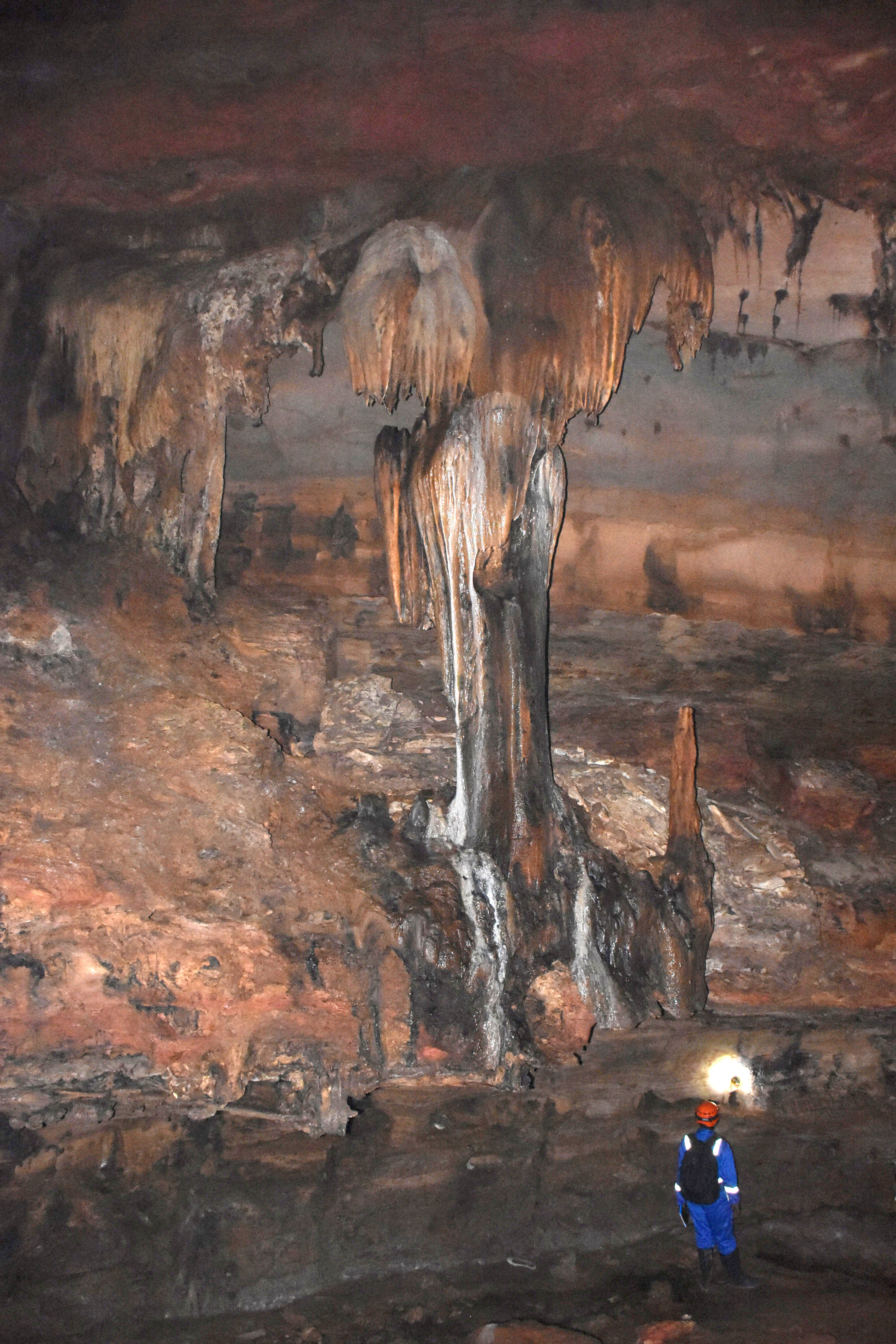
| Session 7: Karst Investigation and Subsurface Researches | ||||
| Wednesday 15th, Room 2 | ||||
| 1rst author Name | Surname | Time | Abstract | Abstract title |
| Fontaine | Olivier | 15h30 | O7-1 | Sedimentary processes inside the Han-sur-Lesse Cave (Belgium) |
| Dewaide | Lorraine | 15h50 | O7-2 | Karstification and associated processes of the Waulsort Formation (Furfooz, Belgium) |
| Deleu | Romain | 16h10 | O7-3 | Tracer tests in La Lembrée karstic system: the crucial importance of a good geological map |
| Poster presentations, Foyer | ||||
| Dehandschutter | Boris | 13h00 | P7-1 | Radon gas in karstic environments, the case of the Noû Bleû Cave, Belgium |
| Lahogue | Pascale | 13h00 | P7-2 | State of knowledge on Kongo Central karst, DRC |
| Moulana | Meriem Lina | 13h00 | P7-3 | Origin of the collapse sinkholes of the Boukadir region (Chelif-Algeria) |
Conveners:
Jean-Marc Baele, UMons (jean-marc.baele@umons.ac.be)
Sophie Decrée, RBINS-GSB (sdecree@naturalsciences.be)
The technological advances of the last decades open new opportunities for geoscientists to solve a wide range of geological problems. Besides the emergence of new techniques such as LIBS (Laser-Induced Breakdown Spectroscopy), LAMIS (Laser-Ablation Molecular Isotopic Spectroscopy), PIL (Plasma-Induced Luminescence) and THz (Terahertz) spectroscopy, the increased availability and improved performance of radiation sources, detectors and spectrometers have brought more traditional techniques such as electron microscopy, X-ray and Raman spectroscopy to the next level. With these techniques, large geochemical and mineralogical datasets can be quickly acquired and with minimal efforts, which fosters the development of imaging and screening applications. In this session, we encourage any contribution on the application of new spectroscopic methods in geosciences, emphasizing their benefits, complementarity with other well-established techniques, but also their limitations.
| Session 8: New Spectroscopic Methods Applied to Geosciences | ||||
| Fiday 17th, Room 1 | ||||
| 1rst author Name | Surname | Time | Abstract | Abstract title |
| Aruaujo | Fernando P. | 14h00 | O8-1 | High-resolution Raman mapping: using micro-analyses to reveal geological processes |
| Kaskes | Pim | 14h20 | O8-2 | Latest developments in micro-X-ray fluorescence (µXRF) analysis in geosciences: high-resolution element mapping, digital image analysis, and quantifications |
| Buyse | Florian | 14h40 | O8-3 | Unravelling the genesis of critical mineral resources by employing advanced imaging techniques |
| Coffee break | ||||
| Verheyden | Sophie | 15h30 | O8-4 | Development of a Laser-Induced Breakdown spectrometry (LIBS) instrumentation and protocols for rapid screening of soils |
| Baele | Jean-Marc | 15h50 | O8-5 | Combined Laser-Induced Breakdown Spectroscopy (LIBS) and Plasma-Induced Luminescence (PIL) for geochemical mapping and profiling of geological samples |
| Burlet | Christian | 16h10 | O8-6 | The ROBOMINERS LIBS spectrometer: a mining sensor prototype for autonomous in-stream, in-slurry geochemical diagnostics |
| Meyvisch | Piotr | 16h30 | O8-7 | Recent advances in infrared spectroscopy applied to single specimen dinoflagellate cysts: methodological framework and applications |
| Poster presentations, Foyer | ||||
| Stasi | Giorgia | 13h00 | P8-1 | ROBOMINERS changing the ground rules |
| Cobert | Corentin | 13h00 | P8-2 | New thermal data for the Rocroi inlier, France and Belgium, based on Raman Spectroscopy of Carbonaceous Material (RSCM) |
| Papier | Severine | 13h00 | P8-3 | Geochemical imaging at hand-sample scale of Belgian Zn-Pb ores using Laser-Induced Breakdown Spectroscopy (LIBS) |
| Meyvisch | Piotr | 13h00 | P8-4 | Recent advances in infrared spectroscopy applied to single specimen dinoflagellate cysts: methodological framework and applications |
| Hulsbosch | Niels | 13h00 | P8-5 | Phase identification and mapping of melt inclusions in complex mineral hosts by confocal Raman spectroscopy and multivariate statistics |
Conveners:
9.1. Polar Sciences and Ice-sheets
Conveners:
Xavier Fettweis, ULiège (xavier.fettweis@uliege.be)
François Fripiat, ULB (francois.fripiat@ulb.be)
Frank Pattyn, ULB (fpattyn@ulb.ac.be)
This sub-session will explore our understanding and quantification of past, present, and future interactions in the Polar Regions and the consequences for the earth system and society. We particularly invite contributions presenting the recent advances in future ice sheets and sea-level changes, atmosphere-sea ice-ocean processes, and biogeochemical cycling in the Polar Regions. Finally, this session will be an opportunity to bring together modelers and observational scientists to share information, identify common problems, and seek collective vision and endeavors for Belgian research in Polar Regions.
Conveners:
Sandra Arndt, ULB (sandra.arndt@ulb.be)
Sophie Opfergelt, UCLouvain (sophie.opfergelt@uclouvain.be)
Bjorn Tytgat, UGent (bjorn.tytgat@ugent.be)
Permafrost, the ground that remains at or below 0°C for more than two consecutive years, underlines about one quarter of the exposed land surface in the Northern Hemisphere. In addition, the wide Arctic shelf hosts a large, yet poorly quantified reservoir of subsea permafrost- a terrestrial relict that mainly formed during glacial periods when the shelf was exposed during low sea level. The Earth’s high latitude regions are warming twice as fast as the global average. As a consequence, permafrost thaw unlocks previously frozen material which becomes available for biogeochemical reactions, with cascading, yet poorly known effects on the terrestrial and aquatic ecosystems, carbon and nutrient cycling, as well as Arctic greenhouse gas budgets and thus climate. In this session, we welcome contributions related permafrost-climate feedbacks, the impacts of permafrost degradation on Arctic biogeochemical cycling, ecosystems and hydrology, past permafrost dynamics as a key to future projections, Alpine permafrost systems, permafrost microbial ecology, remote sensing of permafrost dynamics, subsea permafrost, and thermokarst processes.
| Session 9: Arctic and Polar Sciences - Ice-sheets and permafrost | ||||
| Thursday 16th, Room 2 | ||||
| 1rst author Name | Surname | Time | Abstract | Abstract title |
| Villani | Mäelle | 14h00 | O9-1 | Influence of permafrost degradation and shift in vegetation on litter and soil properties. Case study in Central Alaska |
| Gilliot | Alexia | 14h20 | O9-2 | Evolution of iron-organic carbon interactions during abrupt thaw in ice-rich permafrost: case study in Siberia |
| Hayes | Nicholas | 14h40 | O9-3 | Towards a Coupled Hydrological-Biogeochemical Model of Subglacial Environments |
| Coffee break | ||||
| Muller | Sofia | 15h30 | O9-4 | Seasonal dynamics of nitrous oxide in sea ice in the Central Arctic: insights from the MOSAiC Expedition |
| Delhasse | Alison | 15h50 | O9-5 | Greenland mass balance by 2200 using coupled atmospheric (MAR) and ice sheet (PISM) models |
| Fettweis | Xavier | 16h10 | O9-6 | Reduction of the future Greenland ice sheet surface melt with the help of solar geoengineering |
| Poster presentations, Foyer | ||||
| Louis | Justin | 13h00 | P9-1 | Influence of thermokarst formation on manganese-organic carbon interactions in ice-rich permafrost |
| Mauclet | Elisabeth | 13h00 | P9-2 | Influence of permafrost degradation on foliar mineral element cycling upon changing subarctic tundra vegetation |
| de la Fuente Ruiz | Maria | 13h00 | P9-3 | Modelling methane efflux and ocean acidification triggered by hydrate dissociation |
| Lefebvre | Constance | 13h00 | P9-4 | Assessing the production and efflux of methane gas from thawing subsea permafrost on the warming Arctic shelf |
| Ridolfi | Emilia | 13h00 | P9-5 | Modeling methane production and emission from thawing sub‐sea permafrost on the warming Arctic Shelf |
| Placitu | Silvia | 13h00 | P9-6 | Quantifying Fe-OC associations in sediment using Na-dithionite in Flow-Through Reactors (FTR) |
| Geels | Alexis | 13h00 | P9-7 | Quantifying carbon transformations and fluxes at active methane seeps on the East Siberian Arctic Shelf |
9.1. Polar Sciences and Ice-sheets
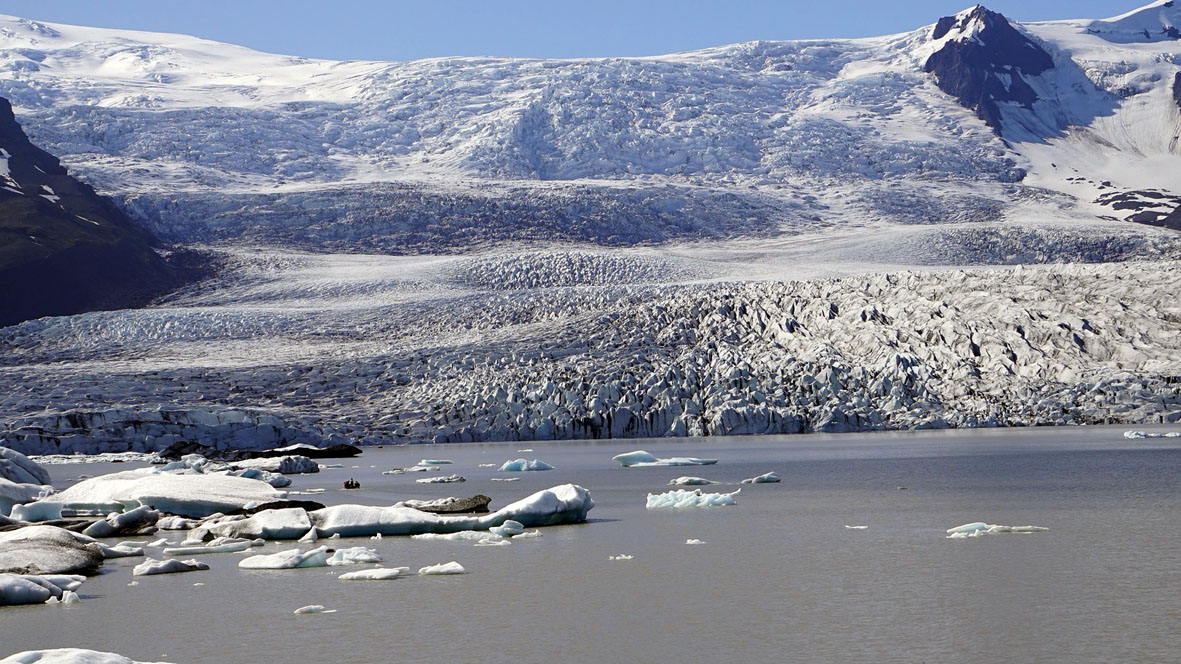 Conveners:
Conveners:
Xavier Fettweis, ULiège (xavier.fettweis@uliege.be)
François Fripiat, ULB (francois.fripiat@ulb.be)
Frank Pattyn, ULB (fpattyn@ulb.ac.be)
This session will explore our understanding and quantification of past, present, and future interactions in the Polar Regions and the consequences for the earth system and society. We particularly invite contributions presenting the recent advances in future ice sheets and sea-level changes, atmosphere-sea ice-ocean processes, and biogeochemical cycling in the Polar Regions. Finally, this session will be an opportunity to bring together modelers and observational scientists to share information, identify common problems, and seek collective vision and endeavors for Belgian research in Polar Regions.
Conveners:
Sandra Arndt, ULB (sandra.arndt@ulb.be)
Sophie Opfergelt, UCLouvain (sophie.opfergelt@uclouvain.be)
Bjorn Tytgat, UGent (bjorn.tytgat@ugent.be)
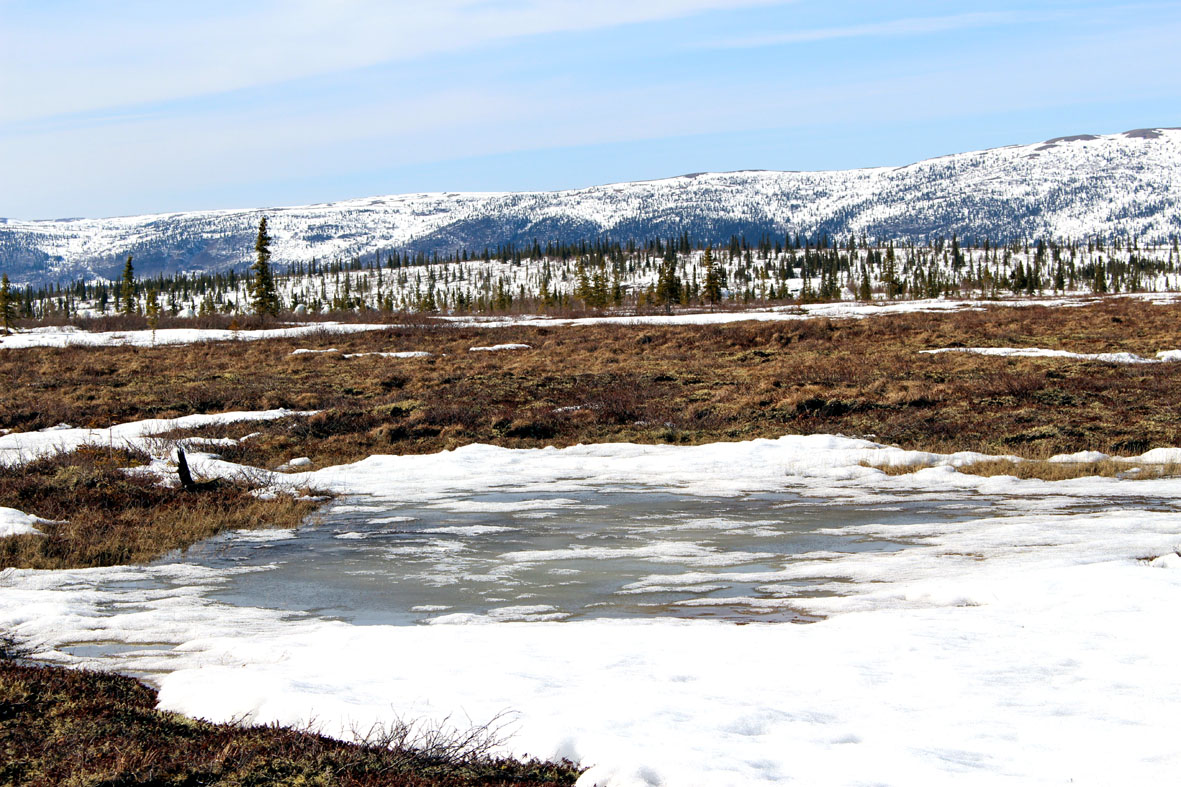 Permafrost, the ground that remains at or below 0°C for more than two consecutive years, underlines about one quarter of the exposed land surface in the Northern Hemisphere. In addition, the wide Arctic shelf hosts a large, yet poorly quantified reservoir of subsea permafrost- a terrestrial relict that mainly formed during glacial periods when the shelf was exposed during low sea level. The Earth’s high latitude regions are warming twice as fast as the global average. As a consequence, permafrost thaw unlocks previously frozen material which becomes available for biogeochemical reactions, with cascading, yet poorly known effects on the terrestrial and aquatic ecosystems, carbon and nutrient cycling, as well as Arctic greenhouse gas budgets and thus climate. In this session, we welcome contributions related permafrost-climate feedbacks, the impacts of permafrost degradation on Arctic biogeochemical cycling, ecosystems and hydrology, past permafrost dynamics as a key to future projections, Alpine permafrost systems, permafrost microbial ecology, remote sensing of permafrost dynamics, subsea permafrost, and thermokarst processes.
Permafrost, the ground that remains at or below 0°C for more than two consecutive years, underlines about one quarter of the exposed land surface in the Northern Hemisphere. In addition, the wide Arctic shelf hosts a large, yet poorly quantified reservoir of subsea permafrost- a terrestrial relict that mainly formed during glacial periods when the shelf was exposed during low sea level. The Earth’s high latitude regions are warming twice as fast as the global average. As a consequence, permafrost thaw unlocks previously frozen material which becomes available for biogeochemical reactions, with cascading, yet poorly known effects on the terrestrial and aquatic ecosystems, carbon and nutrient cycling, as well as Arctic greenhouse gas budgets and thus climate. In this session, we welcome contributions related permafrost-climate feedbacks, the impacts of permafrost degradation on Arctic biogeochemical cycling, ecosystems and hydrology, past permafrost dynamics as a key to future projections, Alpine permafrost systems, permafrost microbial ecology, remote sensing of permafrost dynamics, subsea permafrost, and thermokarst processes.
Convener:
Nathalie Fagel, BELQUA National Committee, ULiège (nathalie.fagel@ulg.ac.be)
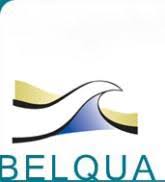 This session, organized by the BELQUA National Committee, aims to review ongoing Quaternary research in Belgium and abroad. The Quaternary has been redefined in 2009 by the International Union of Geological Sciences (IUGS) and the International Commission of Stratigraphy (ICS) after decades of debates (Keer 2008). The Quaternary is now considered as the youngest system within the Cenozoic erathem, it is composed by the Pleistocene and the Holocene series and its base is fixed at 2.6 Ma. The Quaternary is characterized by a high climate variability, with a succession of cold (glacial) and warm (interglacial) periods. These environmental changes influence all the compartments of the Earth system (i.e., atmosphere, hydrosphere, cryosphere, lithosphere, and biosphere). The Quaternary also corresponds to a major evolution of the Hominids with the appearance of the earliest Homo genus. The human induced environmental changes will progressively exceed the natural changes, leading to the definition of the Anthropocene. We invite any contributions dealing with any field of the Quaternary, from field campaign to climate modelling.
This session, organized by the BELQUA National Committee, aims to review ongoing Quaternary research in Belgium and abroad. The Quaternary has been redefined in 2009 by the International Union of Geological Sciences (IUGS) and the International Commission of Stratigraphy (ICS) after decades of debates (Keer 2008). The Quaternary is now considered as the youngest system within the Cenozoic erathem, it is composed by the Pleistocene and the Holocene series and its base is fixed at 2.6 Ma. The Quaternary is characterized by a high climate variability, with a succession of cold (glacial) and warm (interglacial) periods. These environmental changes influence all the compartments of the Earth system (i.e., atmosphere, hydrosphere, cryosphere, lithosphere, and biosphere). The Quaternary also corresponds to a major evolution of the Hominids with the appearance of the earliest Homo genus. The human induced environmental changes will progressively exceed the natural changes, leading to the definition of the Anthropocene. We invite any contributions dealing with any field of the Quaternary, from field campaign to climate modelling.
| Session 10: Quaternary and Anthropocene (BELQUA) | ||||
| Fiday 17th, Room 1 | ||||
| 1rst author Name | Surname | Time | Abstract | Abstract title |
| Fripiat | François | 10h00 | O10-1 | The highest latitude waters of the Southern Ocean and glacial-interglacial change in atmospheric CO2 |
| Vandermaelen | Nathan | 10h20 | O10-2 | Constraining the depositional history of Quaternary fluvial deposits based on grain size, geochemistry and cosmogenic radionuclides |
| Auboiron | Jeanne | 10h40 | O10-3 | Lacustrine record of last millennia precipitation from Lake Esponja and Lake Bertrand of Northern Chilean Patagonia (72°W) |
| Coffee break | ||||
| Wanlin | Gaëlle | 11h30 | O10-4 | Mineralogical and geochemical signal of the crater lake La Alberca de Tacámbaro in Central Mexico as an archive of precipitation over the last millennia |
| Negash | Emnet | 11h50 | O10-5 | Topoclimate and spatio-temporal distribution of summer rain over the Ethiopian highlands |
| Swinnen | Ward | 12h10 | O10-6 | Anthropogenic legacy effects control sediment and organic carbon storage in temperate river floodplains |
| Augustijns | Femke | 12h30 | O10-7 | Vegetation history in the Ethiopian Highlands for the past 18000 years: a multi-proxy analysis of high altitude wetlands |
| Lunch break | ||||
| Fiday 17th, Room 2 | ||||
| Poster presentations, Foyer | ||||
| Bogemans | Frieda | 13h00 | P10-1 | Reconstructing the late Holocene sedimentary landscape of the Zwin area nearby Bruges late-medieval outport Hoeke |
| Astuti | Anik Juli Dwi | 13h00 | P10-2 | Has hydrologic connectivity been taken into account in the Lake Tana Basin (Ethiopia): a literature review on climate, hydrology and geomorphology |
| Broothaerts | Nils | 13h00 | P10-3 | Changes in vegetation and sediment transfers over the last 3000 years in the catchment of Lake Alaotra, Madagascar |
| Engel | Max | 13h00 | P10-4 | Metagenomics of tsunami deposits: developments and challenges from a case study on the Shetland Islands (UK) |
| Fagel | Nathalie | 13h00 | P10-5 | The last millenia sedimentary record of Lago Esponja from Northern Chilean Patagonia |
| Kangi | Gladys | 13h00 | P10-6 | Spatio-temporal variation of the Omo Delta (1990-2018) what remote sensing data reveal and models explain |
| Lyu | Anqi | 13h00 | P10-7 | Regional sensitivity of East Asian summer monsoon to ice sheet and orbital forcing |
| Rosas-Barturen | Miluska | 13h00 | P10-8 | Spatial variation and factors controlling sediment fluxes along the western slopes of the Peruvian Andes |
| SU | Qianqian | 13h00 | P10-9 | The response of global terrestrial vegetation to orbital forcing and CO2 during MIS 11 and MIS 13 |
| van de Velde | Sebastiaan | 13h00 | P10-10 | Reconstructing the spatial redox structure of anoxic oceans using a 3D ocean-based Earth system model Title |
| André | Coralie | 13h00 | P10-11 | Preliminary results from palynological and diatoms analyses from three sites of the Medieval harbour network in the Zwin area in North of Belgium and the Netherlands: Hoeke, Mude and Aardenburg |
| Liang | Ming-Qiang | 13h00 | P10-12 | Paleoclimatic evolutions during the Holocene: A stalagmite δ18O record from Majiaping Cave, Guizhou, China |
Conveners:
Thomas Lecocq, ROB (thomas.lecocq@oma.be)
Frédéric Nguyen, ULiège (f.nguyen@uliege.be)
Adrien Oth, ECGS, Luxembourg (adrien.oth@ecgs.lu)
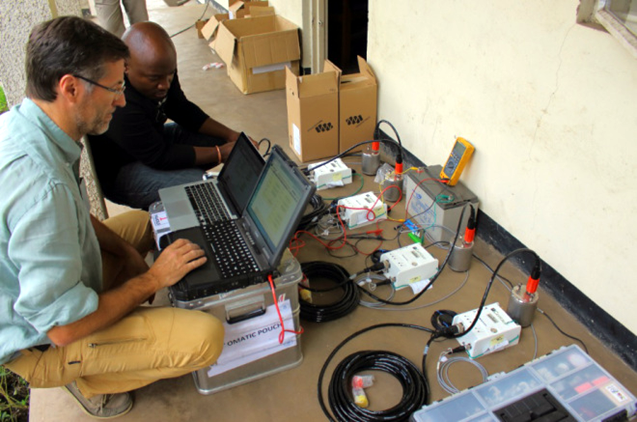
Geophysical techniques are widely used to characterise structures and dynamic processes in the subsurface. While numerous advances in experimental design, instrumentation, data acquisition and processing, numerical modeling, and inversion constantly push the limits of spatial and temporal resolution, the interpretation of the results often remains ambiguous. We invite contributions covering (but not limited to): Geophysical imaging or monitoring approaches such as seismic, electrical resistivity, electromagnetic or ground-penetrating radar. Seismological studies using ambient noise to characterise subsurface structures and dynamic processes are welcome including volcano- and induced seismicity aspects; earthquake source studies; or groundwater related studies.
| Session 11: Geophysics and Seismology | ||||
| Fiday 17th, Room 2 | ||||
| 1rst author Name | Surname | Time | Abstract | Abstract title |
| Neefs | Ben | 10h00 | O11-1 | The effects of Belgian crustal geology and its sedimentary cover on macroseismic intensity attenuation |
| Camelbeeck | Thierry | 10h20 | O11-2 | A new Hainaut coal area earthquake intensity attenuation model using 19th - 20th century shallow seismicity data |
| Zeckra | Martin | 10h40 | O11-3 | Towards a site-characteristic database for the Belgian permanent seismic network |
| Coffee break | ||||
| Gobron | Kevin | 11h30 | O11-4 | Statistical imaging of the deformation over Belgium using multiple geodetic techniques |
| Dupont | Nicolas | 11h50 | O11-5 | Redefinition of the structural units of the Variscan Front based on the results of the Mons2012 and Hainaut2019 seismic surveys in the Hainaut (SW Belgium |
| Rombout | Bernd | 12h12 | O11-6 | Analyzing seismic anomalies in Carboniferous strata in the surroundings of three wells in Mol (Campine Basin, northern Belgium) by means of Amplitude Variation with Offset (AVO) analysis shows potential for deep geothermal exploration |
| Deckers | Jos | 12h30 | O11-7 | Insights from the new 3D fault model for eastern Flanders (northern Belgium) |
| Poster presentations, Foyer | ||||
| Albers | Stijn | 13h00 | P11-1 | CO2 gas discharge in Laacher See: visualization and mapping of accumulated gas in the water column and sedimentary infill of a caldera lake in western Germany |
| Nkodia | Hardy | 13h00 | P11-2 | Slip tendency apply to faults systems in the Congo Basin and its surroundings: A clue to explain western central African passive margin seismicity |
| Martin | Aurélie | 13h00 | P11-3 | Study of the eigenfrequencies of stalagmites to better understand paleoseismicity |
| Walstra | Jan | 13h00 | P11-4 | Geophysical well log correlations in the Quaternary deposits of the Campine area, northern Belgium |
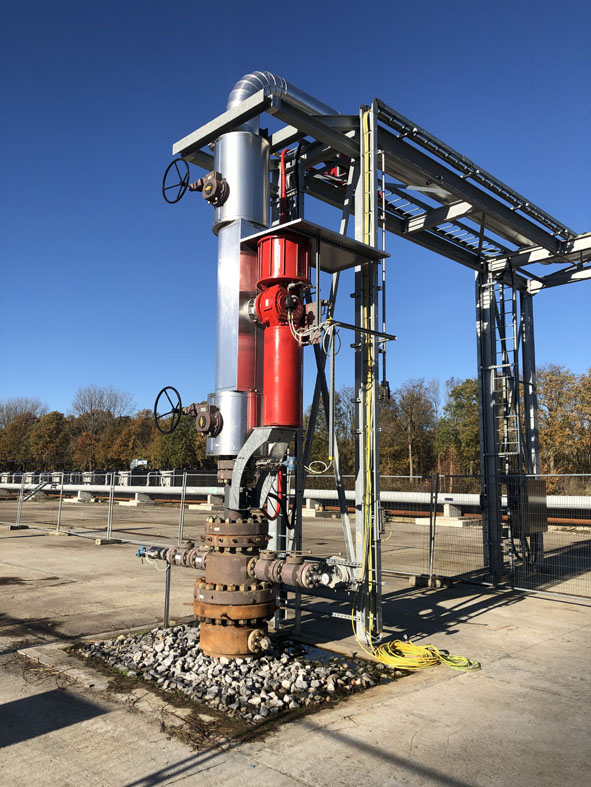 The subsurface of our planet Earth has provided fossil fuels as the main energy source for many decades. In the fight against climate change, fossil fuel consumption must decrease, but our planet's subsurface remains an important source of solutions. Geothermal energy, both shallow and deep, plays a substantial role in the sustainable energy mix of the future as it is a local, sustainable, reliable, and affordable source of energy below our feet. Underground energy storage can be used to accommodate the seasonal difference in heat supply and demand. CO2 Capture and Storage (CCS) consist in capturing the CO2 contained in the emissions of industrial plants, then injecting it deep underground. This technology can play an important role in the transition from fossil to sustainable energy sources and reduce unavoidable process emissions. From these various applications linked to the use of the (deep) subsurface, synergies can emerge but also conflicts of use; to avoid the latter while offering realistic, safe, economical and sustainable solutions, a new level of subsoil planning and assessment methods is needed.
The subsurface of our planet Earth has provided fossil fuels as the main energy source for many decades. In the fight against climate change, fossil fuel consumption must decrease, but our planet's subsurface remains an important source of solutions. Geothermal energy, both shallow and deep, plays a substantial role in the sustainable energy mix of the future as it is a local, sustainable, reliable, and affordable source of energy below our feet. Underground energy storage can be used to accommodate the seasonal difference in heat supply and demand. CO2 Capture and Storage (CCS) consist in capturing the CO2 contained in the emissions of industrial plants, then injecting it deep underground. This technology can play an important role in the transition from fossil to sustainable energy sources and reduce unavoidable process emissions. From these various applications linked to the use of the (deep) subsurface, synergies can emerge but also conflicts of use; to avoid the latter while offering realistic, safe, economical and sustainable solutions, a new level of subsoil planning and assessment methods is needed.
12.1. Geo-energy: Opportunities and Constraints for Subsurface Uses
Conveners:
Virginie Harcouët-Menou, VITO (virginie.harcouet-menou@vito.be)
Olivier Kaufmann, UMons (olivier.kaufmann@umons.ac.be)
David Lagrou, VITO (david.lagrou@vito.be)
This session will cover the specific themes (not exclusive): geothermal energy (shallow, deep and ultra-deep), energy storage, CO2-storage, geological economics, synergies and conflicts of use.
| Session 12.1: Geo-energy: Opportunities and Constraints for Subsurface Uses | ||||
| Wednesday 15th, Room 1 | ||||
| 1rst author Name | Surname | Time | Abstract | Abstract title |
| Van Daele | Johanna | 10h00 | O12-1 | Optimal geodata centralization and disclosure as support for subsurface exploration |
| Dupont | Nicolas | 10h20 | O12-2 | Delineation of inferred high-transmittivity zones in the Dinantian geothermal reservoir of Hainaut (SW Belgium) |
| Tovar | Alejandra | 10h40 | O12-3 | Ranking CO2 storage capacities and identifying their technical, economic and regulatory constraints: A review of methods and screening criteria |
| Coffee break | ||||
| Welkenhuysen | Kris | 11h30 | O12-4 | Decision support under uncertainty for geothermal applications: case selection and concept development |
| Arndt | Martin | 11h50 | O12-5 | The Lower Carboniferous geothermal reservoir of the deep subsurface of North Rhine-Westphalia and its border regions: New insights from 3D mapping |
| Gkousis | Spiros | 12h10 | O12-6 | Deep Geothermal Energy Extraction, a Review on Environmental Hotspots with Focus on Geo-technical Site Conditions |
| Poster presentations, Foyer | ||||
| Ferket | Helga | 13h00 | P12-1 | How geomanifestations can help in policy challenges |
| Meyvis | Bruno | 13h00 | P12-2 | Influence of the heat network rollout time on the risk and profitability of a deep geothermal plant |
| Swennen | Rudy | 13h00 | P12-3 | Fractured Lower Carboniferous carbonates of the Campine Basin (NE-Belgium) as potential geothermal reservoirs: age and origin of open carbonate veins |
| Welkenhuysen | Kris | 13h00 | P12-4 | Analysing CO2 capture, transport, and storage chain options for cement industry in the LEILAC2 project |
| Petitclerc | Estelle | 13h00 | P12-5 | New geological information of the Cambrian basement obtained from geothermal exploration projects in Brussels and Walloon- and Flemish-Brabant |
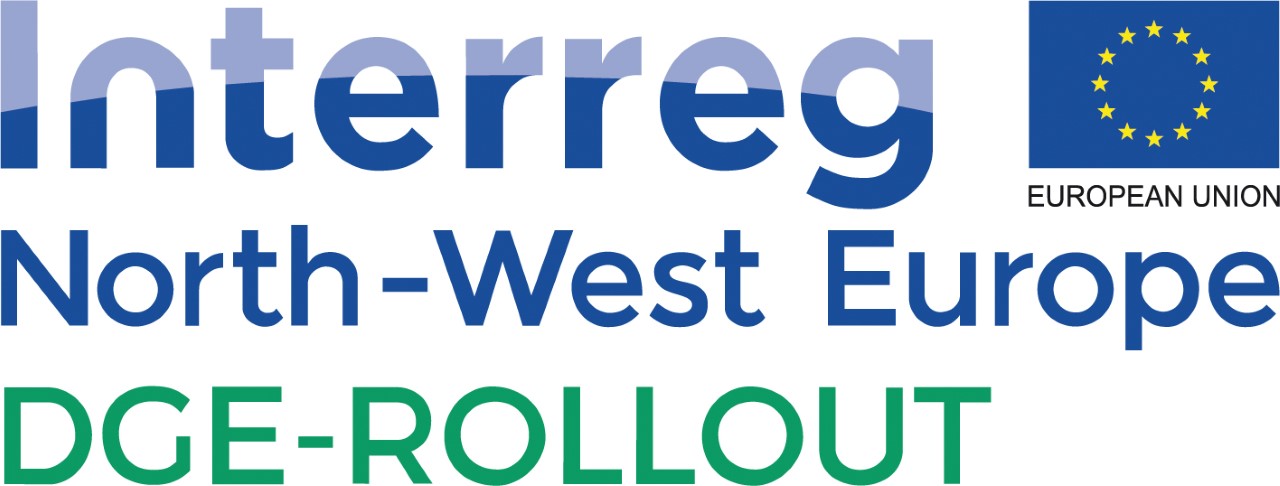 12.2. DGE Rollout, Roll-out of deep geothermal energy in NW-Europe
12.2. DGE Rollout, Roll-out of deep geothermal energy in NW-Europe
Conveners:
Matsen Broothaers, VITO (matsen.broothaers@vito.be)
Tobias Fritschle, GD-NRW (tobias.fritschle@gd.nrw.de)
Estelle Petitclerc, RBINS-GSB (estelle.petitclerc@naturalsciences.be)
Kris Welkenhuysen, RBINS-GSB (Kris.welkenhuyseu@naturalsciences.be)
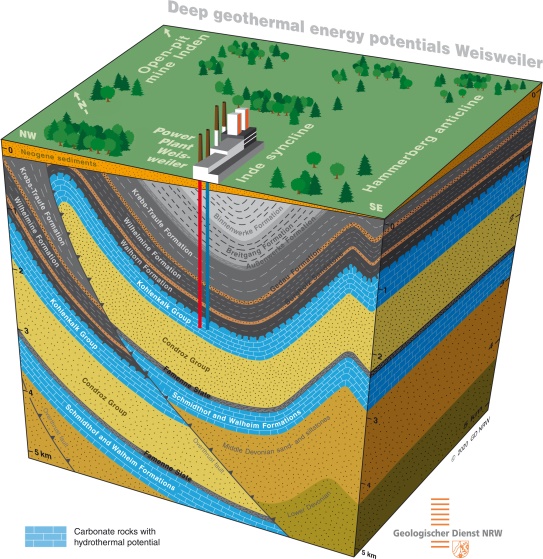 The transnational EU-Interreg funded project “Roll-out of Deep Geothermal Energy in North-West Europe” (DGE-ROLLOUT; www.nweurope.eu/DGE-Rollout) aims to foster the use of deep geothermal energy as a climate- and environmentally-friendly resource in North-West Europe (NWE). Following a multi-disciplinary geoscientific approach, DGE-ROLLOUT investigates one of the most promising carbonate reservoirs in NWE, the Lower Carboniferous Kohlenkalk-Group situated within the Rhenohercynian Basin. The exploitation of such reservoirs using hydrothermal techniques provides the potential to generate climate-neutral heat and power, and therefore helps reduce CO2 emissions.
The transnational EU-Interreg funded project “Roll-out of Deep Geothermal Energy in North-West Europe” (DGE-ROLLOUT; www.nweurope.eu/DGE-Rollout) aims to foster the use of deep geothermal energy as a climate- and environmentally-friendly resource in North-West Europe (NWE). Following a multi-disciplinary geoscientific approach, DGE-ROLLOUT investigates one of the most promising carbonate reservoirs in NWE, the Lower Carboniferous Kohlenkalk-Group situated within the Rhenohercynian Basin. The exploitation of such reservoirs using hydrothermal techniques provides the potential to generate climate-neutral heat and power, and therefore helps reduce CO2 emissions.
This session aims to present the different aspects implemented through and within DGE-ROLLOUT. Presenters from Belgium, France, Germany and the Netherlands will provide insight to current projects, such as cross-border acquisition of 2D-seismic surveys, 3D-modelling of the Kohlenkalk-Group in the subsurface of the transnational area, as well as the development and optimisation of new and existing deep geothermal power plants. A major focus of this session is to contribute to the dissemination of the state of the art on deep geothermal energy, and to establish transnational collaboration to promote the use of this sustainable and widely available energy resource.
| Session 12.2: DGE Rollout, Roll-out of Deep Geothermal Energy in NW-Europe | ||||
| Wednesday 15th, Room 1 | ||||
| 1rst author Name | Slot | Time | Abstract | Abstract title |
| Fritschle | Tobias | 14h00 | O12-7 | DGE-ROLLOUT - Promoting Deep Geothermal Energy in North-West Europe |
| Broothaers | Matsen | 14h20 | O12-8 | Deep geothermal energy in the Lower Carboniferous carbonates in the Belgian Campine Basin: current status of the Balmatt project in Mol |
| Oswald | Thomas | 14h40 | O12-9 | Exploration for Deep Geothermal Energy at the RWE Power Plant Weisweiler, Germany |
| Passamonti | Arianna | 15h30 | O12-10 | A Fraunhofer demonstrator on high temperature heat pump coupled with high temperature mine thermal energy storage |
| Van Melle | Timme | 15h50 | O12-11 | Sustainability and renewability of Geothermal Energy |
| Piessens | Bastian | 16h10 | O12-12 | High-Temperature Medium Deep Borehole Thermal Energy Storage Pilot Plant |
